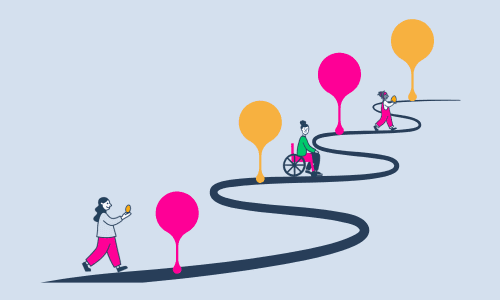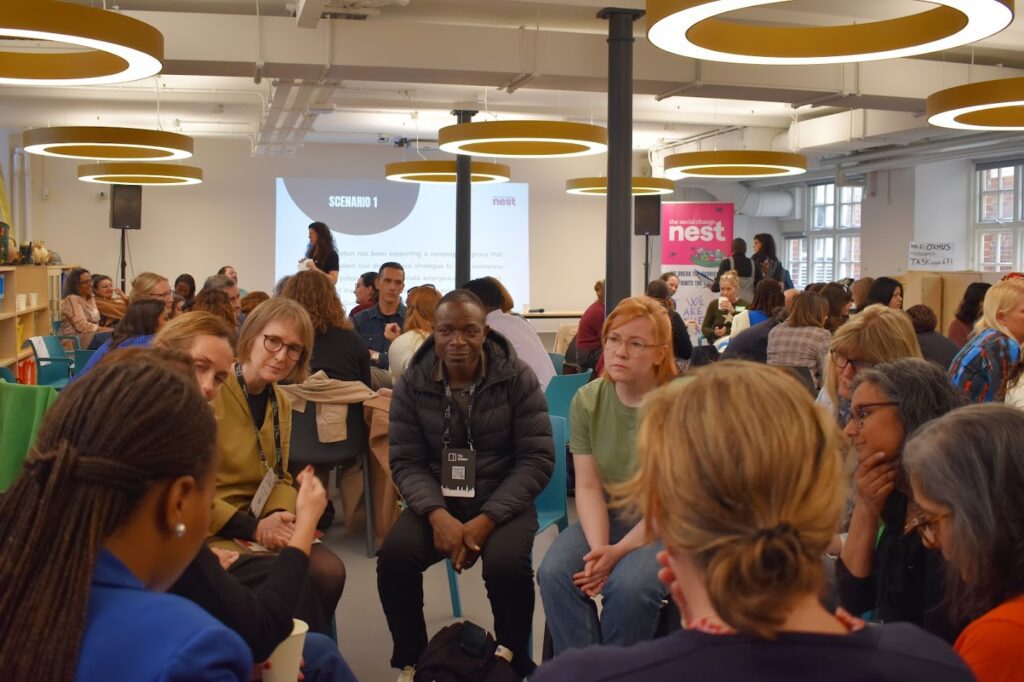The Collaborative Leadership Canvas
It’s time to swap ego and hierarchy for collaborative leadership
A new tool to help leaders and groups distribute power and responsibility.
This article was originally published on our sister organisation’s website The Social Change Agency.
We know, you know, everybody knows that social change is never down to just one person. Many hands are needed to make real, long lasting transformation. Yet so often, the organisational processes and structures we fall back on reinforce top-down models of leadership, rather than collective endeavours.
We’re here to change that.
After years of working with grassroots groups, social movements, public services and networks, we know that successful leadership isn’t a solo journey. That’s why we’ve created the Collaborative Leadership Canvas, to help changemakers to turn the traditional model on its head and redefine leadership as a shared process. By taking a collective approach – and swapping ego and hierarchy for openness and equality – groups and organisations can innovate better, grow stronger and achieve greater impact.
Ok… but how?
Lucky for you, we’ve spent the last few months developing a framework that can help you to implement collaborative leadership in your organisation, network or group.
The Collaborative Leadership Canvas dives into everything that’s important for successful collaborative leadership – from operations, to governance – and acts as a diagnostic tool so you can work out where you’re at right now – and how to improve.
Alongside the Canvas itself, we’ve produced a comprehensive guide, to take you and your team through each step of the process.
Download the Collaborative Leadership Canvas + Guide
Key traits, skills and outcomes of collaborative leadership
The canvas is built around five core traits that underpin successful leadership and five key skill areas that are essential to achieve meaningful social change.
The five key traits of successful leadership:
- Vulnerability
- Communication
- Trust
- Transparency
- Accountability
The five key skill areas:
- Raising and managing resources
- Power and systems
- Cultivating leadership
- Wellbeing
- Governance and decision-making
When collaborative leadership is in place and these traits and skills are scoring high across the group, there are then five outcomes that should start to appear or improve…
- Deep facilitation
- Managing risk
- Strategic thinking
- Increase in social impact
- Increase in co-production
By paying attention to these outcomes, you can start to see whether or not your collective leadership is working.
How to use the Collaborative Leadership Canvas
Whether you’re an individual or a group, this can be a challenging process. You’ll need to be ready to ask searching questions about your strengths and weaknesses and answer honestly about where things need to change. That means leaving egos at the door, and approaching the process with openness, respect and humility.
If you’re using the canvas as a group, make sure everyone is clear on what you’re doing, why and how the process will work before you get started. Agree on one or more people who can take notes as you go through the questions.
You may not agree with others in your group on every point. Take the time you need to listen to their perspectives and find a consensus. By doing this, you’ll create space for truly insightful discussions and reflections that deliver a realistic pathway towards a more collaborative approach.

